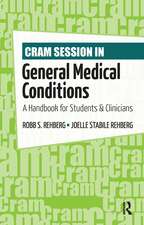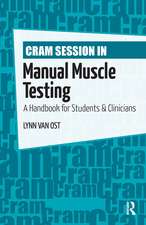Biomechanics of Cycling
Editat de Rodrigo R. Bini, Felipe P. Carpesen Limba Engleză Hardback – 14 mai 2014
| Toate formatele și edițiile | Preț | Express |
|---|---|---|
| Paperback (1) | 644.41 lei 6-8 săpt. | |
| Springer International Publishing – 3 sep 2016 | 644.41 lei 6-8 săpt. | |
| Hardback (1) | 838.78 lei 6-8 săpt. | |
| Springer International Publishing – 14 mai 2014 | 838.78 lei 6-8 săpt. |
Preț: 838.78 lei
Preț vechi: 882.92 lei
-5% Nou
Puncte Express: 1258
Preț estimativ în valută:
160.51€ • 171.63$ • 133.82£
160.51€ • 171.63$ • 133.82£
Carte tipărită la comandă
Livrare economică 18 aprilie-02 mai
Preluare comenzi: 021 569.72.76
Specificații
ISBN-13: 9783319055381
ISBN-10: 3319055380
Pagini: 125
Ilustrații: XV, 125 p. 54 illus., 23 illus. in color.
Dimensiuni: 155 x 235 x 15 mm
Greutate: 0.34 kg
Ediția:2014
Editura: Springer International Publishing
Colecția Springer
Locul publicării:Cham, Switzerland
ISBN-10: 3319055380
Pagini: 125
Ilustrații: XV, 125 p. 54 illus., 23 illus. in color.
Dimensiuni: 155 x 235 x 15 mm
Greutate: 0.34 kg
Ediția:2014
Editura: Springer International Publishing
Colecția Springer
Locul publicării:Cham, Switzerland
Public țintă
Professional/practitionerCuprins
Introduction to biomechanical assessment for performance and injury prevention in cycling.- Pedal forces.- Muscle activity.- Joint angles in cycling.- Kinetics and pedalling technique.- Overuse injuries and biomechanics.- Body position on the bicycle.- Optimizing bicycle components.- Technology in cycling.
Recenzii
From the book reviews:
“This book tackles a complicated area of exercise science - biomechanics -- and interprets many of the principles in an understandable way in the context of cycling. … this book will benefit readers interested in biomechanics and the sport of cycling the most. … This is a unique book. It is quite informative and well-supported by the literature from the field of exercise science and biomechanics.” (Erik H. Vanlterson, Doody’s Book Reviews, September, 2014)
“This book tackles a complicated area of exercise science - biomechanics -- and interprets many of the principles in an understandable way in the context of cycling. … this book will benefit readers interested in biomechanics and the sport of cycling the most. … This is a unique book. It is quite informative and well-supported by the literature from the field of exercise science and biomechanics.” (Erik H. Vanlterson, Doody’s Book Reviews, September, 2014)
Textul de pe ultima copertă
Bicycles have been a common device to enhance physical fitness level in gyms and training centers along with solid use in competitive sport. For that reason, biomechanics of cycling has grown as a research field with many publications addressing different perspective of the interaction between the cyclist and his bicycle. The most common end point of research on biomechanics of cycling is optimization of performance and reduction of injury risk. One goal of this book is to meet the growing need for a comprehensive presentation of contemporary knowledge on biomechanics of cycling which will positively influence the activity of cycling in a global fashion. In order to accomplish this purpose, ten chapters are presented with focus on varying methods for biomechanical analysis of cycling motion. The introduction section provides an overview of the main methods for assessment of cycling motion, including motion analysis, pedal force measurements, muscle activation, anthropometry and joint kinetics. These methods are discussed in depth in individual chapters followed by chapters on characteristics of bicycles and potential perspectives to improve their configuration in order to improve performance of cyclists and reduce their overuse injury risk. Moreover, a preliminary method to train technique in cyclists is shown. A final chapter provides authors perspective on the upcoming technology that should be effective in helping training of cyclists.
Caracteristici
Provides much needed research on biomechanics of cycling Provides information on optimising body position on bicycle for improving performance and reducing overuse injury risk Highlights important issues in biomechanics of cycling Includes supplementary material: sn.pub/extras




















